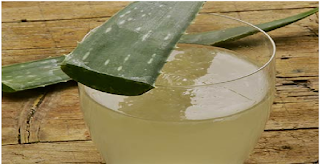There are thousands of herbs that grow in India. Here, we
have list
20 most profitable medicinal herbs that have
several
applications and good market potential.
1. Aloe vera – Aloe Barbadensis miller
Aloe vera is a high-value medicinal herb. It has several
usage in the industry. Such as in cosmetics, medicine and beverages. You can
start the farming with small capital investment.
2. Brahmi – Bacopa Monnieri
Brahmi has high medicinal value. It is one of the
traditional and early age herbs in India. The plant has fleshy, oval shaped
leaves 1-2cm long, from opposite along the stems. Small, tubular, five-petaled,
white flowers develop in leaf terminals and can blossom over many months of the
year.
3. Calendula – Calendula officinalis
Calendula is easy to grow plant. It has huge medicinal
values. It can be grown on poor land with the partial or full sun. It does
require regular watering. So you must be careful about the irrigation system of
your calendula farm.
4. Basil – Ocimum basilicum
In India, Basil is known as tulsi. The plant is considered
as “Queen of Herbs”. The plant has many medicinal properties. It is used in
medicine, cosmetics and food as well. In any type of climate, including
tropical and sub-tropical, basil can be grown.
5. Amla – Phyllanthus Emblica
Amla is an important crop in India. It has high medicinal
value. Amla is used in medicine and cosmetics industry. This is a tropical
plant. You can grow amla in light and medium heavy soil except purely sandy
soil.
6. Ashwagandha – Withania Somnifera
Ashwagandha grows well in the dry and sub-tropical region.
Madhya Pradesh, Haryana, Gujarat, Punjab, Rajasthan are the major grower states
in India. Organically grown ashwagandha has good market potential.
7. Daruharidra – Berberis Aristata
DaruHaridra is an important ayurvedic medicine. It also used
in juice production and in the cosmetics industry. The plant prefers light,
medium and heavy soils. It can be grown heavy clay and even in nutritionally
poor soil.
8. Guggal – Commiphora Wightii
Rajasthan & Gujarat is in the top position in guggul
farming in India. It has rich medicinal value since long back. The plant is a
woody shrub with knotty, crooked, sping brown bracties. Guggal is considered as
a drought aria salinity resistant plant.
9. Jatamansi – Nardostachys Jatamansi
Jatamansi is used in medicine, perfume and cosmetics
industry. Jatamansi is harvested for local use and for the trading purpose of
its roots and rhizomes.
10. Lavender – Lavandula
Lavender farming is profitable in India. Lavender can be
grown only in the Himalayan region, wherever it snows, as it requires water
only when first planted.
11. Lemon Grass – Cymbopogon
Lemon grass is a perennial plant. Lemon grass is one of the
commercially cultivated crop in India in a wide range. Apart from medicinal
value, the major use in perfumery, cosmetics, soaps, detergents and beverages.
12. Jatropha – Jatropha curcas
Jatropha is one of the best oil seed plants. It has
medicinal properties and as well as in industrial purpose. The plant prevents
soil erosion. The crop can be grown in the wasteland, poor soil, low rainfall
and drought areas.
13. Kesar – Crocus sativus
Saffron is known as Kesar. It is the most expensive spice in
the world. Saffron is majorly used in culinary seasoning and to get colour with
taste in different food products. It has high medicinal value.
14. Stevia – Stevia Rebaudiana
Stevia is largely used as a sugar substitute. Stevia
cultivation in India is profitable. It has medicinal values and also used in
the cosmetics industry.
15. Vanilla – Vanilla planifolia
Vanilla is one of the costliest spice in the market after
saffron. Vanilla is used in Ayurveda, medicines and in food. Karnataka is in
the top position in India in vanilla cultivation.
16. Yashtimadhu – Glycyrrhiza glabra
The English name is Liquorice. Yastimadhuis one of the most
popular medicinal herbs in India and also in abroad. The root of the plant
(liquorice) contains a substance called glycyrrhizin which is 50 times sweeter
than sugar.
17. Sarpagandha – Rauvolfia Serpentina
Sarpagandha has different medicinal values. Sarpagandha is a
profitable herb. The plant prefers soil with plenty of humus and rich in
nitrogenous and organic matter with good drainage. Alkaline soils are not
suitable for commercial cultivation.
18. Parsley – Petroselinum crispum
Parsley prefers a well-drained, moisture retaining soil.
Parsley requires a good amount of light to grow. You must have frequently
watering system in summer.
19. Patchouli – Pogostemon cablin
Patchouli is one of the important aromatic plants cultivated
for its oil. Humid climate with plenty of sunlight is suitable for this crop.
The plant grows well as an intercrop in partial shade, but complete shade
should be avoided.
20. Safed Musli – Chlorophytum Borivilianum
This plant has some excellent ayurvedic properties. You can
grow anywhere in the country. Commercial cultivation with good crop management
practice will give you wonderful profit.
Furthure information require please free to contact us. Please join our official
Website: http://www.shatrasagri.com
Facebook page
Website: http://www.shatrasagri.com
Facebook page
Founder of,
Pankaj Ramoliya
+91 97146 16040
| info@shatrasagri.com | shatrasagri@gmail.com |
405, Blue stone Enterprise,Near Shyamdham Temple, Varachha ,Surat-395006












